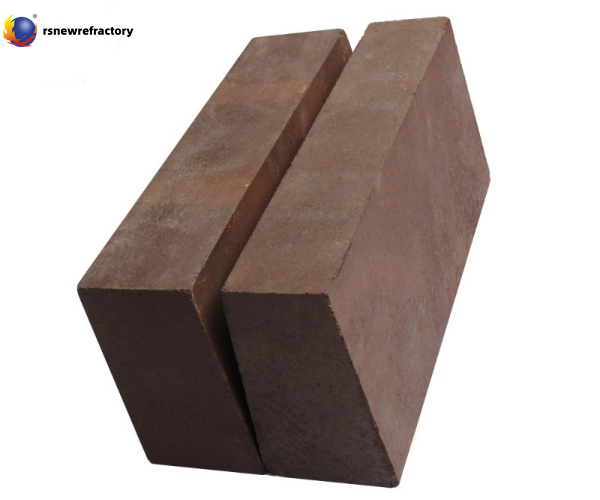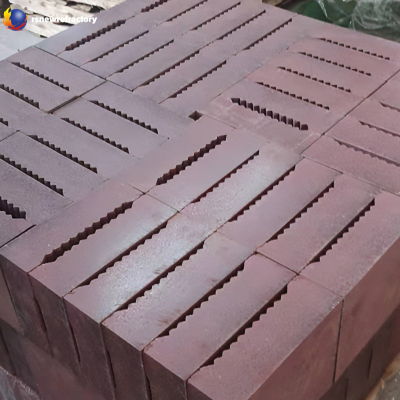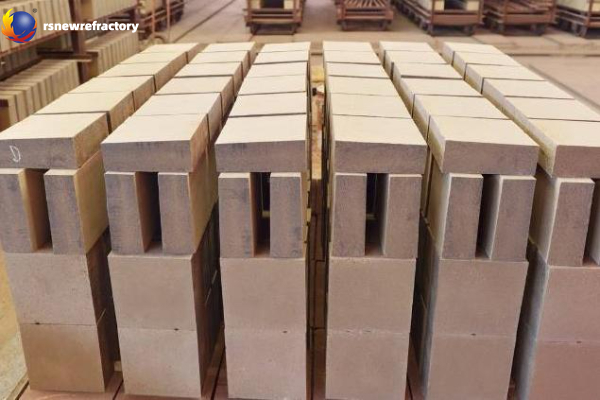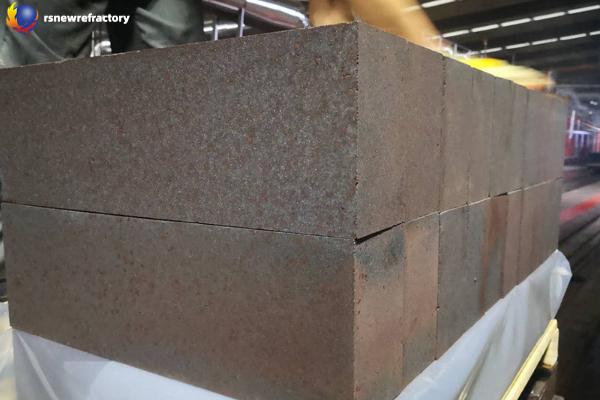マグネシアクロマイト耐火レンガの製造工程紹介
マグネシアクロマイト耐火煉瓦は、MgOを含むアルカリ性耐火物です。: 55%-80%, Cr2O3: 8%-20%, ペリクレースと複合スピネルXO・Y2O3を主結晶相とする, このうち XO は主に MgO と FeO です。; Y2O3は主にCr2O3です, Al2O3, Fe2O3. XOとY2O3のモル数は等しい, 過剰な Y2O3 は複合スピネルに溶解します。. 小さなケイ酸塩相もあります (フォルステライトとカンラン石).

マグネシアクロムレンガ原料
マグネシアクロムレンガ 高品質のマグネシア砂とクロマイトを焼結して作られています (Cr2O3: 30%?45%, CaO 1%~1.5%未満) 主な原材料として. マグネシアクロムレンガの製造プロセスは一般に、レンガの製造プロセスと同様です。 マグネシアレンガ. 未焼成のマグネシアクロムレンガは、結合剤として無機マグネシウム塩溶液を使用します. 緩み効果は、MgO と Cr2O3 の膨張によって引き起こされます。, Al2O3, またはスピネルを形成するための焼成プロセス中の酸化鉄. 事前に合成されたマグネシアクロム砂はレンガの製造に使用可能, 1600℃以上の酸化雰囲気で焼成する必要がある. 大気の性質が変化した場合, クロム鉄鉱中のFe2O3は酸化還元反応の影響を受け、さまざまな価数の鉄酸化物を形成します。. 同時に, Cr2O3 も還元されて、異なる価数の化合物が生成されます。. 繰り返される反応の下で, レンガが傷んでいる, そのため、高MgOおよび低Cr2O3の製品ができる限り使用されます。.

マグネシアクロマイト耐火煉瓦の種類
マグネシアクロムレンガは、溶融鋳造マグネシアクロムレンガに分類できます。, マグネシアクロム直接結合レンガ, ケイ酸塩結合マグネシアクロムれんが, 再結合マグネシアクロム煉瓦, 半再結合マグネシアクロム煉瓦, 予備反応マグネシアクロムレンガと未焼成マグネシアクロムレンガ.
マグネシアクロマイト耐火レンガの特性に及ぼす製造技術の影響
製造プロセスの違いにより、マグネシアクロム材料の構造は大きく異なります, これはマグネシアクロムレンガの性能に影響を与えます。. 例えば, 直接結合マグネシアクロムレンガは優れた熱衝撃安定性を持っています, マグネシアクロム融着れんがは強い耐食性を持っています, 半再結合マグネシアクロムレンガの性能は 2 つの中間になります。. このため, このセクションでは、マグネシアクロムレンガの性能に対する製造プロセスの影響について詳しく説明します。.
準備プロセスはマグネシアクロム耐火レンガにどのような特性に影響しますか?
生産プロセスは組織構造に影響を与える, 熱い強さ, 熱衝撃安定性, 等. マグネシアクロムレンガの

クロム鉱石がMCHレンガの性能に及ぼす影響
クロム鉱石はマグネシアクロマイト耐火レンガを製造するための主原料です. 主要な不純物の含有量はソースの違いにより異なります. 加えて, 添加されるクロム鉱石の量もプロタクチニウムクロムレンガの性能に影響します。. ここでは主にクロム鉱石の原料と添加量がマグネシア・クロム直接結合煉瓦の性能に及ぼす影響について説明します。.
クロム鉱石の粒径の影響
クロム鉱石の臨界粒径が小さくなると、製品の圧縮強度が増加します。, 高温曲げ強さ (1400℃, 0.5h) クロム鉱石の臨界粒径が小さくなると減少する. クロム鉱石の臨界粒径が1.5mmの場合, 熱衝撃安定性がピークに達する.
直接結合マグネシアクロムれんがの特性に対するクロム鉱石含有量の影響

クロム鉱石含有量の増加に伴い, 直接結合したマグネシウムとクロムのサンプルの見かけの気孔率が減少します。, かさ密度が増加します, 熱衝撃安定性が向上します.
 栄勝耐火物工場
栄勝耐火物工場
微信
wechatでQRコードをスキャンしてください